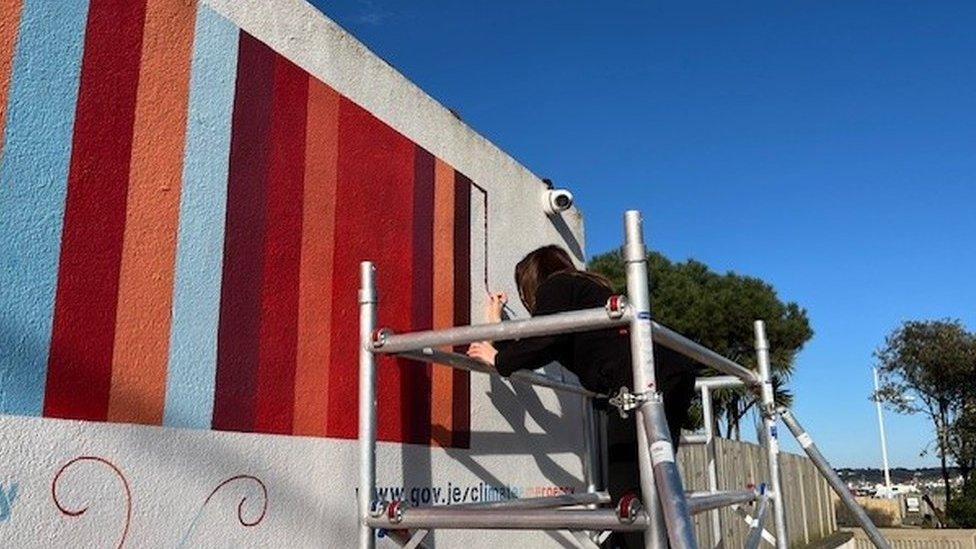Climate Wall has stripe added to show 2023 temperatures
- Published

The Climate Wall depicts the average annual temperatures over the past 130 years
A new stripe marking last year's high temperatures has been added to the Climate Wall in St Helier.
The deep red stripe is the 130th to be painted on the wall on the Waterfront which is a visual record of average annual temperatures since 1894.
"I hope people look at this and actually take a moment to think about what it means," Paul Aked, head of meteorology for Jersey Met, said.
Temperatures have risen by 1.3 degrees over the past 130 years, he said.
He said 2023 was the equal second warmest year on record and only slightly cooler than 2022, which had the highest annual average temperature on record.

Temperatures have risen by 1.3 degrees in the past 130 years, Mr Aked said
It would take time for temperatures to reduce, he explained.
"It's going to take a number of years for all of the work that's being done for us to see the reaction of climate change and any reduction in temperature," he said.
The concept for the Climate Wall was developed by Professor Ed Hawkins at the University of Reading in 2018.
Each stripe represents the average temperature of a year with shades of blue showing cooler-than-average years and red shades used for hotter-than-average years.

Follow BBC Jersey on X (formerly Twitter), external and Facebook, external. Send your story ideas to channel.islands@bbc.co.uk, external.
Related topics
- Published3 July 2023